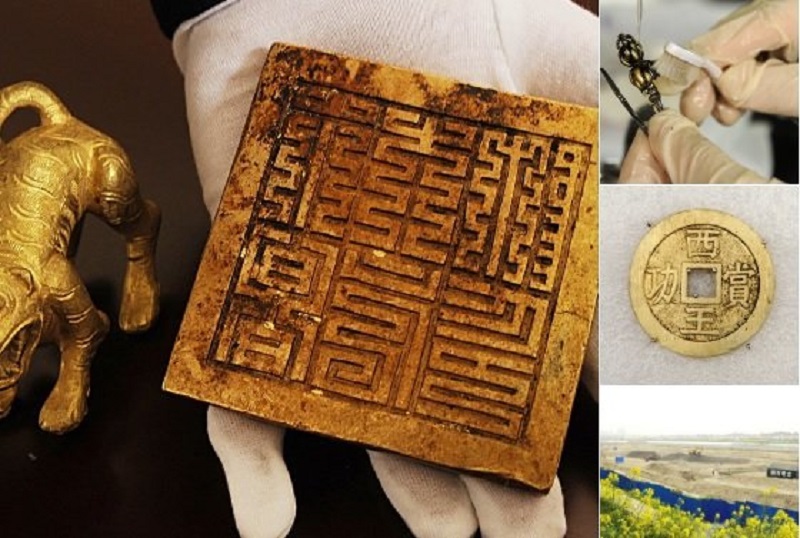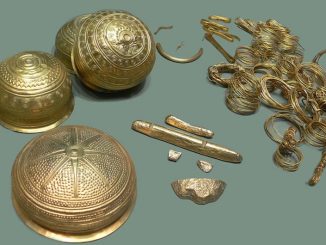Many precious items from more than 370 years ago were found at the bottom of the river. They bear the mark of the history of China’s Ming Dynasty.

According to Xinhua News Agency on March 20, Chinese archaeologists announced the discovery of a treasure of more than 10,000 gold and silver objects and jewelry dating back more than 300 years ago at the bottom of a river. in Sichuan province.
The above treasure was discovered at a depth of about 5 meters below the river bottom, at the intersection of the Minjiang River and Jinjiang River branch, 50 km south of the capital Chengdu of Sichuan province.
According to Director of the Institute of Archeology and Cultural Heritage Research Gao Dalun, the treasure contains many coins as well as jewelry made of gold, silver and copper, in addition to weapons made of iron such as swords, knives and spears. .
It is unclear what characters were engraved on the gold and silver objects, but archaeologists say the embossed patterns on the jewelry demonstrate the skillful and sophisticated workmanship of ancient craftsmen.
Archaeologist Li Boqian of Peking University said the above items are extremely valuable to Chinese science, history and art, as well as playing a significant role in the study of political life. political, economic, social and military during the Ming Dynasty (1368-1644).
Archaeologists said they will be excavating the area until next April and are expected to discover many other objects.
The above area is where peasant uprising leader Zhang Xianzhong (Zhang Xianzhong) was defeated by Ming Dynasty soldiers in 1646.
Legend has it that Truong Hien Trung brought 1,000 boats carrying stolen gold, silver and jewels to Lao Ho wharf, Giang Khau town, Banh Son district, when a Ming Dynasty general suddenly attacked, causing most of the fleet to sink into the river. .
“The items found this time have helped identify the area where the battle took place and are also clear evidence for the above historical event,” Chinese archaeologist Wang Wei commented.
The work to salvage the treasure has been prepared since January this year when the dry season began in Sichuan. The salvage team had to use water pumps day and night to remove water from the river.


